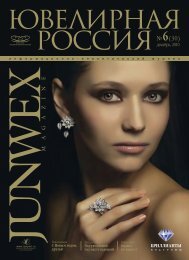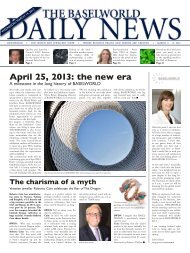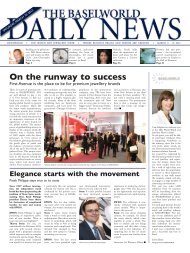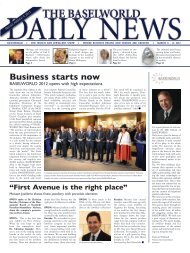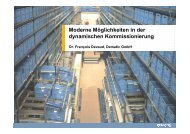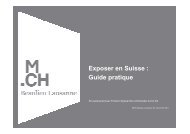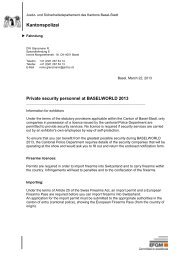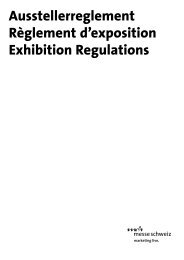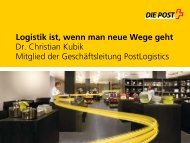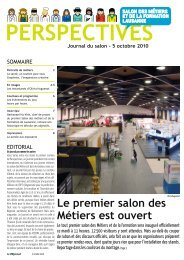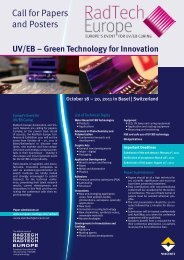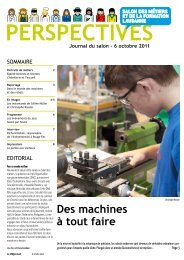WatchTime - August 2012
WatchTime - August 2012
WatchTime - August 2012
You also want an ePaper? Increase the reach of your titles
YUMPU automatically turns print PDFs into web optimized ePapers that Google loves.
A<br />
hairspring is minuscule, but its importance cannot be overestimated<br />
– a mechanical timepiece simply won’t work without it. At just<br />
3/100 of a millimeter thick, this tiny spring is thinner than a human<br />
hair. It weighs only about 2.5 milligrams. But if you remove it from<br />
a movement, the watch will grind to a halt instantly. Without the tiny<br />
spring, the balance (the hairspring’s partner, to which it is attached)<br />
will stop oscillating after just one beat. The gear train will also stop<br />
dead in its tracks because it lacks the life-supporting energy the hairspring<br />
provides. It’s no wonder that the hairspring is called the<br />
“soul” of a mechanical watch.<br />
Ambitious watchmakers and engineers have devoted themselves<br />
to this tiny component for decades. Few secrets remain.<br />
Contemporary hairsprings are made from an alloy known as<br />
“Nivarox,” a name coined from the French acronym for “neither<br />
variable nor oxidizing.” Reinhard Straumann (1892–1967)<br />
perfected the process of hairspring manufacturing using Nivarox<br />
in his Waldenburg, Switzerland, laboratory in 1932,<br />
120 <strong>WatchTime</strong> <strong>August</strong> <strong>2012</strong><br />
Four metal strips are wound into hairsprings at A. Lange & Söhne.<br />
which greatly improved the accuracy of watches. Nivarox consists<br />
primarily of iron, nickel and chrome, with additional mixtures<br />
of very small amounts of beryllium and other ingredients.<br />
Straumann’s patent from the 1930s specifies the formula for<br />
the Nivarox alloy, but he never divulged all the details of his secret<br />
blend. The exact formula is known only by a select few individuals<br />
at Nivarox-FAR, a subsidiary of the Swatch Group.<br />
These tiny springs function almost perfectly with<br />
monometallic balances made from Glucydur, a blend of beryllium<br />
bronze, brass and nickel. The theory on which the rate behavior<br />
of mechanical watches is based is complex enough to fill<br />
many volumes, but we’ll make a long story short: each semi-oscillation<br />
of the balance and its hairspring should be as nearly<br />
identical to every other beat as possible, regardless of shocks,<br />
magnetic fields and fluctuations in air pressure and temperature.<br />
When this is achieved, the device is said to oscillate with<br />
perfect isochronism. Temperature fluctuations cause particularly<br />
drastic changes in the length and elasticity of the metal strip<br />
that forms the hairspring. In simple bronze hairsprings, an increase<br />
or decrease of just 1 degree Celsius can cause a watch’s<br />
daily rate to deviate by as much as 10 seconds. But thanks to the<br />
negligible temperature coefficient of Nivarox, hairsprings made<br />
from this alloy can reduce the daily deviation of rate to just half<br />
a second.



